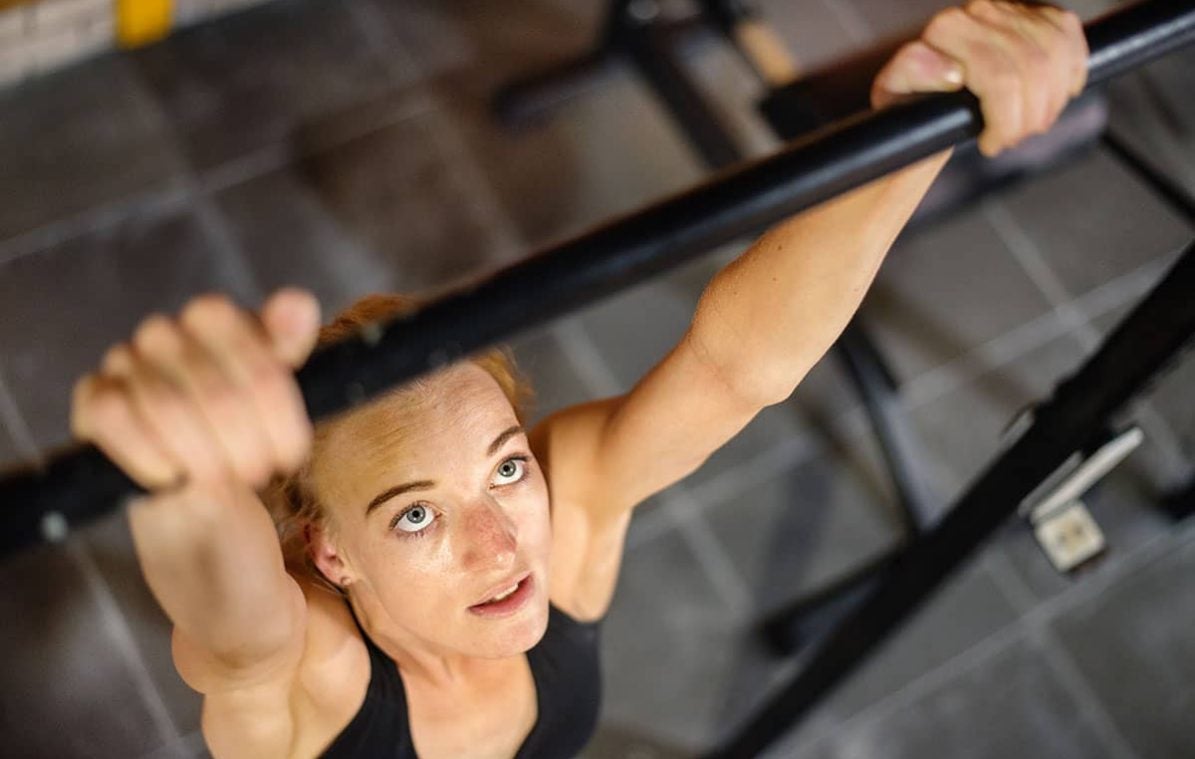3 Exercises to Improve Your Pull-Ups
 ©NickyLloyd
©NickyLloyd
Pull-ups might have long been on your list of things to master at some point in the future. You’ve worked on your lat pull-down, rowed and tried out various things to work up to it such as eccentric pull-ups, but you still can’t properly hold on to the pull-up bar and doing more than one pull-up just isn’t possible. Let’s assume you’re not lacking upper arm and back strength, so maybe it’s time to pay more attention to your forearms and to improve your grip strength to perfectly complement your pull-up session.
Grip strength ensures a firm grip. Sounds logical, right? It is. Nevertheless, we often miss out working on our grip strength, even though it can make things easier for us. It helps you overcome everyday challenges like carrying heavy bags, and it improves how you perform in workouts. People who exercise may also find themselves unable to add more weight when deadlifting or rowing, even though fundamentally they have the strength to do so. What they’re lacking is the necessary grip strength. This prevents full upper body muscle strength from being used. So it doesn’t matter if you’re just starting out with pull-ups or if you’re further along – grip strength training is guaranteed to benefit your overall fitness.
Related: Learn More About the Different Types of Grip Strength.
These three exercises can help you improve your grip strength!
#1 Farmers Carry
A popular exercise when it comes to grip strength is the Farmers Carry. You carry two heavy kettlebells (or dumbbells), one in each hand, or you can carry weight plates or a trap bar. The idea is to carry the weight for as long as possible, up to three minutes at a time, so try to add a few seconds each time. If there’s enough room at your gym, you can simply walk a straight line for the exercise, if not, you can also do it while walking on the spot and setting a timer.
Muscles: Full body workout, especially for upper and lower arm muscles, upper back, shoulders, frontal and side abdominal muscles, lower back.
Note: Be careful not to grip too tightly, so you don’t exhaust your grip strength too quickly. Also pay attention to how tense you are (your core particularly), and don’t let the weights make you wobble. This makes the Farmers Carry an intense full-body exercise. The wider the weight, the harder it will be for you to carry.
#2 Dead Hang or Scapula Pull Ups
This exercise couldn’t be easier… at least as far as the description is concerned. Using a shoulder-width overhand grip, hang from a pull-up bar – and simply maintain this position. This is the passive dead hang. Your arms remain stretched, and your shoulders slide towards your ears. Be careful not to swing and let gravity pull you down. In the active dead hang, your shoulder blades and core are activated, but since our focus is primarily on your grip strength, just use the passive variant.
Start with 3 x 10 seconds and increase steadily. When you can last roughly 3 x 60 seconds, you can vary the grip position and use a neutral grip (with your palms facing each other), or do the same exercise on rings instead of a bar. Rings pose a greater challenge as they’re less stable. Things get even more intense when you bend your arms.
Scapula pull ups, as you can see from the video, also train your grip strength and prepare you for pull-ups by strengthening your shoulder blade muscles and improving your muscular control. Pull yourself up from the passive hanging position by pulling your shoulder blades together and down towards your tailbone and keeping your arms stretched.
If you can’t get your head round the movement, try the whole thing in a standing position first. Extend your straight arms upward and try to target just your shoulder blades and pull them downward. Did you notice that your chest automatically rises? It’s exactly this movement that you need to perform while in the hanging position.
Muscles: You’ll use your arm and hand muscles intensely, but your shoulder muscles and torso should also feel challenged.
Note: If you can’t keep hold of the bar yet, place your toes on the ground (or on a box).
#3 Reverse Bicep Curls with Dumbbells
You’ve probably already tried bicep curls. But what about reverse bicep curls? To do this, hold your weights in an overhand grip so that the palms of your hands face your thighs, or when in motion, the floor. Keep your arms slightly bent. While standing with your upper body straight, raise the dumbbells towards your chest while exhaling, bending your arms and then lowering them back to the front of your thighs in a controlled manner. Keep your elbows tucked in to your body.
Muscles: Upper and lower arm muscles, hand extensor and hand flexor muscles.
Note: Don’t use speed to move the weights. Only move your forearms, while keeping your elbows close to your body and your torso and buttocks tense. The movement should come from your elbow joint.
These exercises should be easy to incorporate into your workout three or four times a week, preferably towards the end of the session. You don’t have to perform all three at once either, simply fit them into your personal workout session. If you’ve trained your back intensively for example, skip the carries and train your grip strength using reverse biceps curls instead, to avoid having sore muscles right across your back the next morning.
Sources for this article
We at foodspring use only high-quality sources, including peer-reviewed studies, to support the facts within our articles. Read our editorial policy to learn more about how we fact-check and keep our content accurate, reliable, and trustworthy.





























